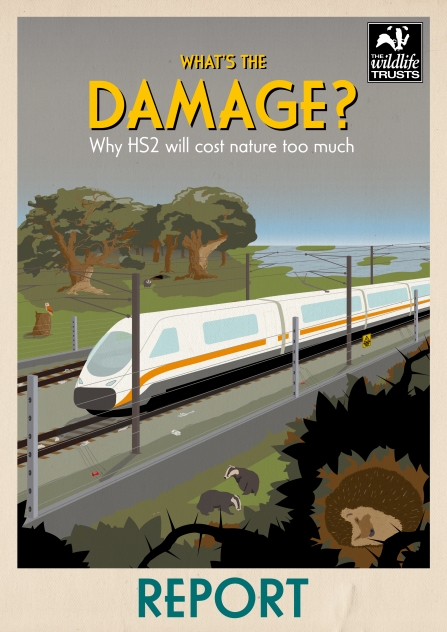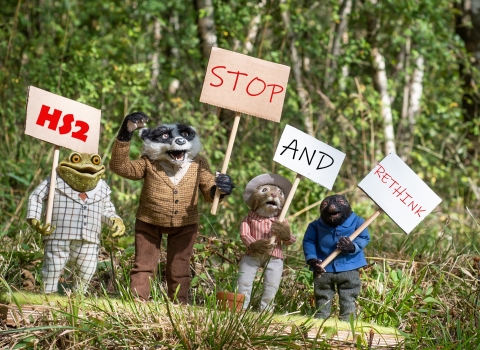A new report published by The Wildlife Trusts today reveals, for the first time, the vast scale of the destruction and impact that HS2 will cause to nature. ‘What’s the damage? Why HS2 will cost nature too much’ is the most comprehensive assessment of the environmental damage that HS2 will cause. It assesses the broad range of impacts across all phases of HS2 on protected wildlife sites, species and landscape restoration projects.
High Speed Rail (HS2) – new report reveals exorbitant cost to nature

Drawing on data from 14 Wildlife Trusts affected by the current plans, other charities and landowners* along the route, the report shows that HS2 will divide and destroy huge swathes of irreplaceable natural habitat and important protected wildlife sites up the length of England. This will cause permanent loss of nature, increased fragmentation of wild places, and the local extinction of endangered species.
The report finds that HS2’s current proposals will risk the loss of, or significantly impact:
- 5 Wildlife refuges of international importance, protected by UK law
- 33 Sites of Special Scientific Interest which are protected by UK law
- 693 Classified Local Wildlife Sites
- 21 Designated Local Nature Reserves
- 26 Large landscape-scale initiatives, including:
- 4 Nature Improvement Areas awarded £1.7 million of public money
- 22 Living Landscapes – partnership schemes to restore nature
- 18 Wildlife Trust Nature Reserves – many are also designated wildlife sites
- 108 Ancient woodlands, an irreplaceable habitat
- Other irreplaceable habitats such as veteran trees, wood pasture, old meadows
- Extensive further areas of wider natural habitat
- Barn owls and endangered wildlife such white-clawed crayfish, willow tit and lizard orchid. Rarities like dingy skipper may become locally extinct.
The figures are grim and the reality is worse.The Wildlife Trusts' Director of Campaigns and Policy
Nikki Williams, The Wildlife Trusts’ Director of Campaigns and Policy says “The figures are grim and the reality is worse. The potential loss of so many really important wild places and the wildlife that depends on them has never been revealed before – nor has the damage that will be done to taxpayer-funded, nature recovery projects. HS2 will destroy precious carbon-capturing habitats if it’s allowed to continue in its current form – it will damage the very ecosystems that provide a natural solution to the climate emergency.
“The data also shows that HS2 Ltd’s proposed mitigation and compensation is inadequate and the small measures that they have suggested are inappropriate – amateurish suggestions of paltry measures in the wrong places. Nature and our climate are already in big trouble and we must not make a dire situation even worse – that’s why we are calling on the Prime Minister to stop and rethink the entire development.”
The Wildlife Trusts believe that if HS2 has to go ahead, a new approach is needed – one that, in keeping with current government commitments, takes a greener approach which leaves the natural world in a better condition than it was before.
Nikki adds “The Government has pledged to create a Nature Recovery Network – a commitment to reverse wildlife’s decline by creating more habitat and green arteries that allow nature to spread and thrive once more. Developments like HS2 should not be a permanent barrier to wildlife – they should be designed to enhance, not harm, the environment. It’s not too late to stop and rethink now – before HS2 creates a scar that can never heal.”

